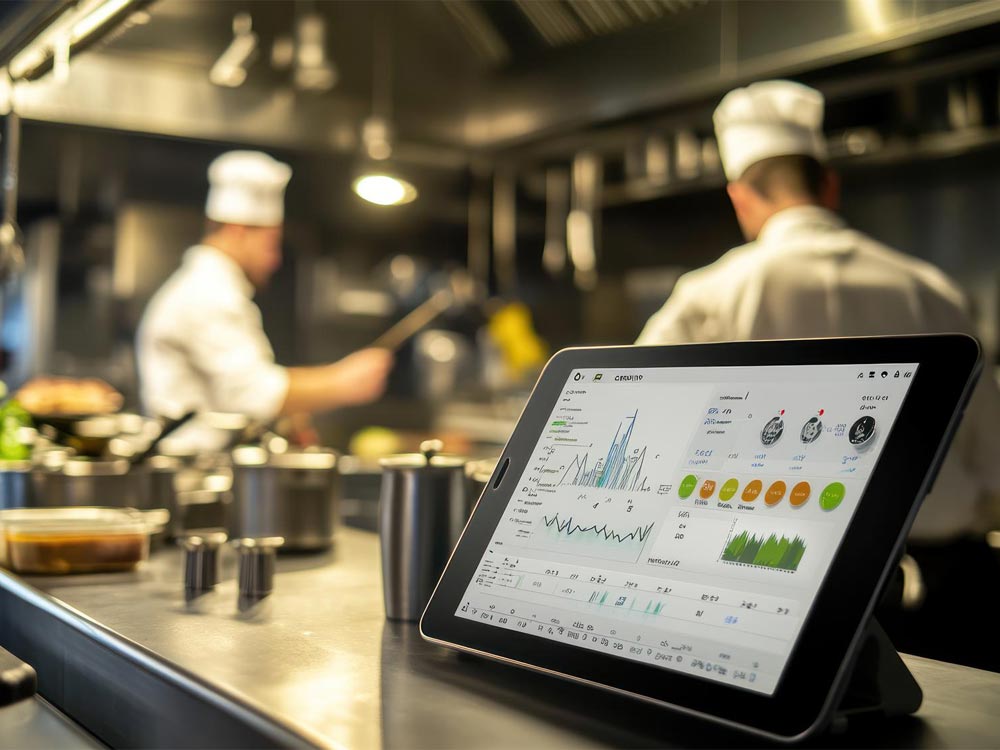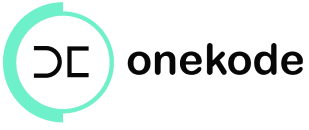Reducing inventory waste in restaurants through software can have a significant impact on profitability, operational efficiency, and sustainability. With the help of specialized platforms, restaurants can optimize inventory management, track perishable goods, forecast demand accurately, and minimize waste caused by over-ordering or spoilage. Here’s a detailed explanation of how software can help achieve this:
1. Inventory Tracking and Management
Effective inventory management software can track inventory levels in real time, offering insights into how much stock is available, what needs to be ordered, and which items are approaching expiration. By maintaining accurate inventory records, restaurants can prevent over-purchasing and ensure that perishable items are used before they spoil.
Key Features of Inventory Tracking Software:
- Real-time inventory updates: Automatically deduct ingredients as dishes are sold, providing real-time insights into stock levels.
- Expiration date tracking: Allows tracking of perishable goods based on expiration dates, alerting staff to use them before they spoil.
- Smart ordering: Some platforms automatically generate orders for ingredients when stock is low, avoiding over-purchasing.
- Supplier integration: Software can be connected with suppliers for seamless ordering and reduced manual tracking.
Examples of Software:
- BlueCart: Offers end-to-end inventory tracking and ordering solutions that help minimize waste.
- Upserve: Provides real-time inventory tracking and predictive analytics to forecast ingredient usage.
- MarketMan: Allows restaurants to monitor inventory levels, track prices, and avoid over-ordering by setting thresholds for reordering.
2. Demand Forecasting and Predictive Analytics
Inventory waste in restaurants is often caused by fluctuating demand, leading to overstocking or underutilization of perishable ingredients. Software with predictive analytics can analyze historical sales data, weather patterns, local events, and seasonal trends to provide accurate demand forecasting.
How Demand Forecasting Helps:
- Optimized purchasing: Predicting demand enables more accurate ordering, preventing overstocking.
- Menu optimization: Understanding which dishes sell the most (and when) helps adjust the menu to align with customer demand, reducing waste from unused ingredients.
- Labor and prep planning: Forecasting tools can help plan for kitchen labor and ingredient preparation more efficiently, aligning production with anticipated sales.
Examples of Software:
- Toast POS: Analyzes historical sales and customer behavior to forecast demand, optimizing inventory levels.
- 7shifts: While primarily a workforce management tool, it integrates with inventory platforms to align staffing and prep schedules with demand forecasts.
- ClearCOGS: This AI-driven platform offers real-time demand forecasting specifically for inventory reduction, providing insights into how much to prepare each day.
3. Recipe Management and Portion Control
Inventory waste often stems from inconsistent portion sizes and poorly managed recipes. By utilizing recipe management software, restaurants can standardize portions, reduce over-preparation, and optimize ingredient use.
Key Benefits of Recipe Management Software:
- Standardized portion sizes: Ensures that every dish uses the same amount of ingredients, reducing waste caused by over-preparation.
- Cost calculation: Provides precise cost breakdowns for each menu item, helping restaurants determine profitable dishes and reduce ingredient waste.
- Batch preparation tracking: Tracks batch preparation to ensure ingredients are used optimally and not wasted during cooking.
Examples of Software:
- KitchenCUT: Helps manage recipes and control portion sizes while tracking inventory use, ensuring ingredient efficiency.
- ChefTec: Provides recipe costing, portion control, and inventory management tools, minimizing waste by maintaining consistency in food preparation.
4. Waste Tracking and Analytics
Some software solutions are specifically designed to track and analyze food waste in real-time, allowing restaurants to identify the root causes of waste and take corrective actions.
How Waste Tracking Tools Work:
- Waste categorization: Helps categorize the type of waste (e.g., prep waste, plate waste, spoilage) and provides insights into why and where waste is occurring.
- Waste reduction strategies: Offers data-driven recommendations for reducing waste, such as adjusting portion sizes, rethinking menu items, or improving storage practices.
- Staff accountability: Encourages staff to monitor waste closely, often by making them more aware of food costs and waste patterns.
Examples of Software:
- Leanpath: Tracks all food waste in the kitchen, providing insights into what’s being wasted and why, so restaurants can make adjustments.
- Winnow Solutions: Uses AI to weigh and analyze food waste in real-time, offering data to reduce overproduction and spoilage.
5. Supplier and Purchase Order Management
Some software platforms streamline supplier management and purchase orders, making it easier to avoid over-ordering or missed deliveries, both of which can contribute to waste. These tools allow restaurants to monitor supplier performance, pricing, and order history, ensuring accurate and timely orders.
Benefits:
- Avoid over-ordering: By tracking real-time inventory and forecasting needs, the system prevents excess ordering.
- Bulk vs. fresh orders: Helps balance the purchase of bulk non-perishables with the precise quantities of fresh ingredients needed.
- Supplier management: Improves relationships with suppliers by ensuring order accuracy and avoiding spoilage from delays or errors.
Examples of Software:
- MarketMan: Tracks supplier orders and pricing, optimizing purchasing decisions based on actual inventory needs.
- BlueCart: Manages supplier orders, making it easier to match inventory levels with delivery schedules and demand.
6. Food Donation and Redistribution
For restaurants that still end up with surplus food, software solutions can help redistribute excess inventory to food banks and charities, reducing food waste and benefiting communities.
How Redistribution Platforms Work:
- Inventory alerting: Notifies local food banks or redistribution centers when surplus food is available.
- Donation tracking: Keeps track of donated food for tax benefits and compliance reporting.
- Community engagement: Creates opportunities for restaurants to contribute to local communities by donating excess food.
Examples of Software:
- Food Rescue US: Connects restaurants with surplus food to local food banks and charities.
- Too Good To Go: Allows restaurants to sell surplus food at a reduced price to consumers.
Conclusion: How Software Reduces Inventory Waste
- Data-driven Decisions: By using real-time data and predictive analytics, restaurants can make smarter purchasing, preparation, and inventory decisions that directly reduce waste.
- Optimized Inventory Control: Software platforms automate inventory tracking and supplier orders, ensuring that restaurants buy only what they need.
- Waste Awareness: Tools like Leanpath and Winnow bring visibility to kitchen waste, allowing restaurants to adjust their processes and training to minimize losses.
- Maximized Food Use: Recipe management and portion control software ensures that ingredients are used effectively and consistently.
- Community Impact: Redistribution tools ensure that any surplus food still goes to good use, either through donations or discounted sales.
Using software to manage inventory, track waste, and forecast demand not only improves restaurant efficiency but also contributes to a more sustainable business model. By adopting these technologies, restaurants can cut costs, reduce environmental impact, and improve operational performance.
.png)








